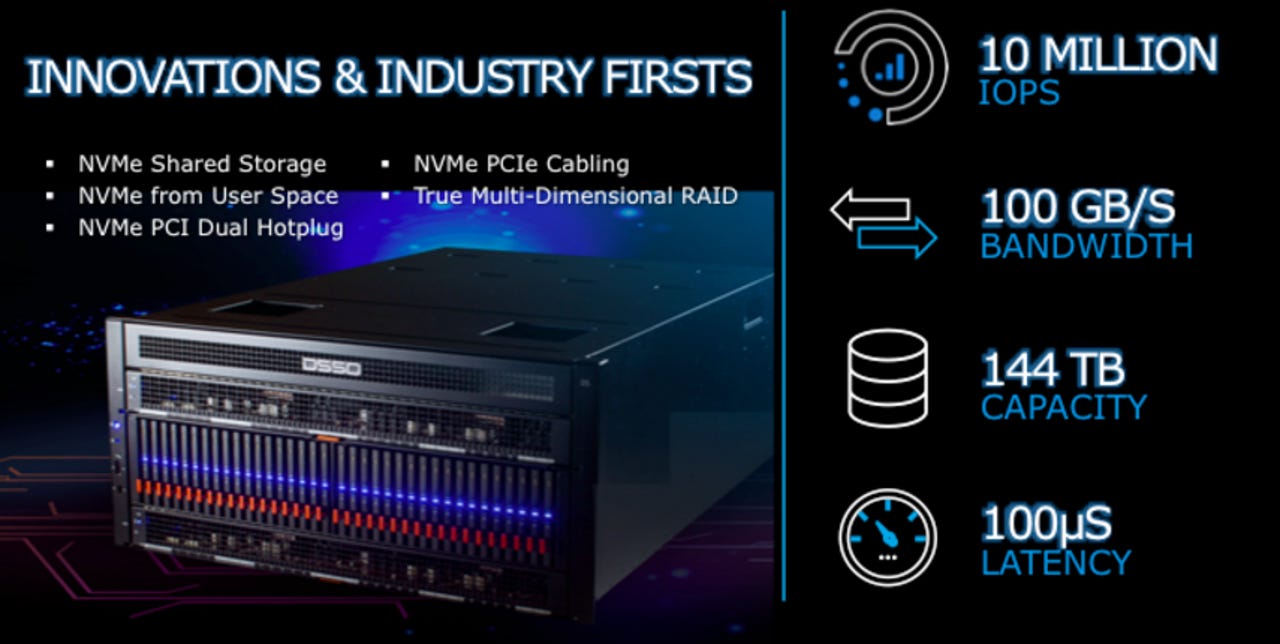EMC goes all-in on Flash storage, launches DSSD D5 rack system

EMC on Monday launched what it calls "rack-scale Flash," a type of solid state storage that can be used for both traditional and next-gen workloads with low latency and high performance.
The system, dubbed DSSD D5, highlights EMC's move to go all-in on Flash storage. That strategy goes like this:
- EMC will commit to all-Flash for its storage systems going forward. Traditional disk will be used for bulk storage and archiving.
- VMAX all Flash arrays will be packaged as appliances and have lifetime maintenance pricing.
- Flash building blocks will be available for converged infrastructure.
- EMC's take is that all storage will be Flash-based by 2020.
There's a good reason for EMC's move. First, EMC is the largest Flash storage system vendor, but faces stiff competition from the likes of Pure Storage, NetApp and a bevy of others (HPE, IBM, Hitachi, Western Digital etc.) In addition, there's software defined storage that'll mean fewer storage systems in the field.
At the center of EMC's Flash effort it DSSD D5, which can support up to 48 redundant connected servers. D5 connects to each node and leverages the latest technology to cut latency. D5 is a standalone appliance.

In a blog post, EMC said:
Another key focus area for DSSD has been to bypass all the layers evident in legacy stacks to get data to the application faster. So, when the application wants to do an I/O, it goes directly and efficiently to the app from DSSD without interruptions.
DSSD D5 will be used for everything from oracle to Hadoop workloads.
EMC said Flash storage will wind up in all of its systems including:
- XtremIO all flash arrays.
- VMAX All Flash.
- VNX Series arrays.
- VCE converged infrastructure.